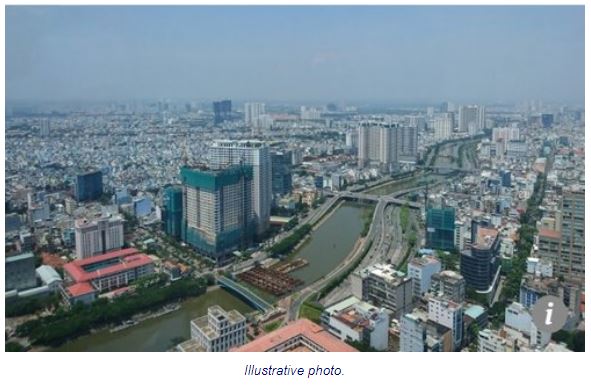Vietnam unlikely to face 10-year-economic crisis cycle: Report
BIDV’s experts stated that there were clear signs of economic-financial crisis in Vietnam in each 10 year cycle from 1988 – 1989, 1998 – 1999, and 2008 – 2009, however, there is little evidence that the cycle could be repeated in the 2018 – 2019 period.
The BIDV’s report pointed to six major differences between the previous and current periods, which include:
(1) Vietnam’s credit growth has increased at more appropriate rate;
(2) the government has stepped up effort to ensure a stable and healthy development of the finance – banking system, while the reasonable interest rate has created positive impact on growth;
(3) Vietnam’s budget balance has been shifted towards sustainability, in which the structure of credit is focused on manufacturing sector, especially in priority fields, while loans are tightened to sectors posing high potential risks;
(4) inflation rate is kept under control, along with stable exchange rates and a record high of foreign exchange reserves;
(5) both real estate and stock markets are showing positive improvements towards sustainability;
(6) step by step Vietnam’s business and investment environments have been improved, in turn building trust among citizens, enterprises and international organizations.
Six major challenges to Vietnam’s economy
Meanwhile, there remains six challenges to Vietnam’s economy in its quest of rapid and sustainable development.
Firstly, inflationary pressure and high volatility of exchange rate. Vietnam’s consumer price index (CPI), a gauge of inflation, expanded 3.52% year-on-year in the first eight months, against the government target of 4%. Due to an increase in prices of goods and services in both domestic and world markets, the inflation rate could reach over 4% in 2018 and 2019 if the situation is not handled appropriately.
Additionally, the US dollar by the end of August 31, 2018 increased by 2.66% against the dong compared to the beginning of the year. As the US economy is growing strongly, potential interest rate hikes in the later part of 2018 will no doubt put more pressure on the USD/VND exchange rate.
Secondly, low productivity. Vietnam’s average productivity in the 1991 – 2017 period is higher than Bangladesh and Cambodia, but lower than many other countries in the region. By the end of 2017, Vietnam’s productivity was 6.9 – 14 times lower than that of South Korea, Japan and Singapore, and 2.6 – 5.4 times lower than Thailand, Indonesia and Malaysia.
Thirdly, Vietnam’s economy in terms of efficiency and competitiveness remains low compared to the region and on global scale. The country’s average incremental capital-output ratio (ICOR) in the 2011 – 2017 period was 5.3:1, which is three to four times higher than other countries with similar scale of economy.
Moreover, the total factor productivity (TFP) contributed at low rate of 31% during this period, lower than the regional average of 45 – 55% and significantly lower than the rate of India, Thailand, the Philippines and Malaysia (50 – 70%).
The global competitiveness report of the World Economic Forum in 2017 stated that over the last 10 years, Vietnam has had significant improvements in some basic requirements (infrastructure, macroeconomic environment, health and primary education), modest improvements in efficiency enhancers (higher education and training, technological readiness and labor market efficiency), and no change in innovation and sophistication factors (business sophistication, innovation).
Fourthly, the business community still faces numerous difficulties. In the first eight months of 2018, the number of newly established enterprises and registered capital increased by 2.4% and 6.9% year-on-year, which were lower than the respective rates of 16.3% and 44.8% year-on-year in 2017 and 19.7% and 51% year-on-year in 2016).
During the January – August period, the number of enterprises suspending operation increased by 45.9% year-on-year (higher than the growth rate of 11.8% and 17% year-on-year in 2017 and 2016, respectively).
FDI sector`s return on asset (ROA) reached the highest among Vietnam`s economic groups in 2016 with 6.9%, followed by the state sector with 2.6% and the private sector with 1.4%, according to the General Statistics Office (GSO).
BIDV’s experts considered business environment as challenge to the low efficiency in operation of the private sector, among other reasons.
Fifthly, the economic restructuring process is lagging behind. In the first six months of 2018, equitization schemes of eight state owned enterprises (SOEs) were approved with a total value of VND29.37 trillion (US$1.29 billion), making the target of equitizing at least 85 SOEs by the end of this year a real challenge. Under the equitization plan approved by Prime Minister Nguyen Xuan Phuc, at least 85 SOEs must complete the equitization process by the end of this year.
Moreover, only five out of 181 state owned enterprises (SOEs) subject to divestment completed the process, bringing the total number of enterprises that had divested to 16 during the 2017 – 2018 period.
The progress is far behind expectation set in the list of SOEs marked for divestment during 2017 – 2020 under the PM’s Decision No.1232, targeting the divestment in 135 SOEs in 2017 and 181 in 2018.
Sixthly, Vietnam’s economy is still vulnerable to external shocks, which could have negative impacts on the growth quality in the future.


 English
English




